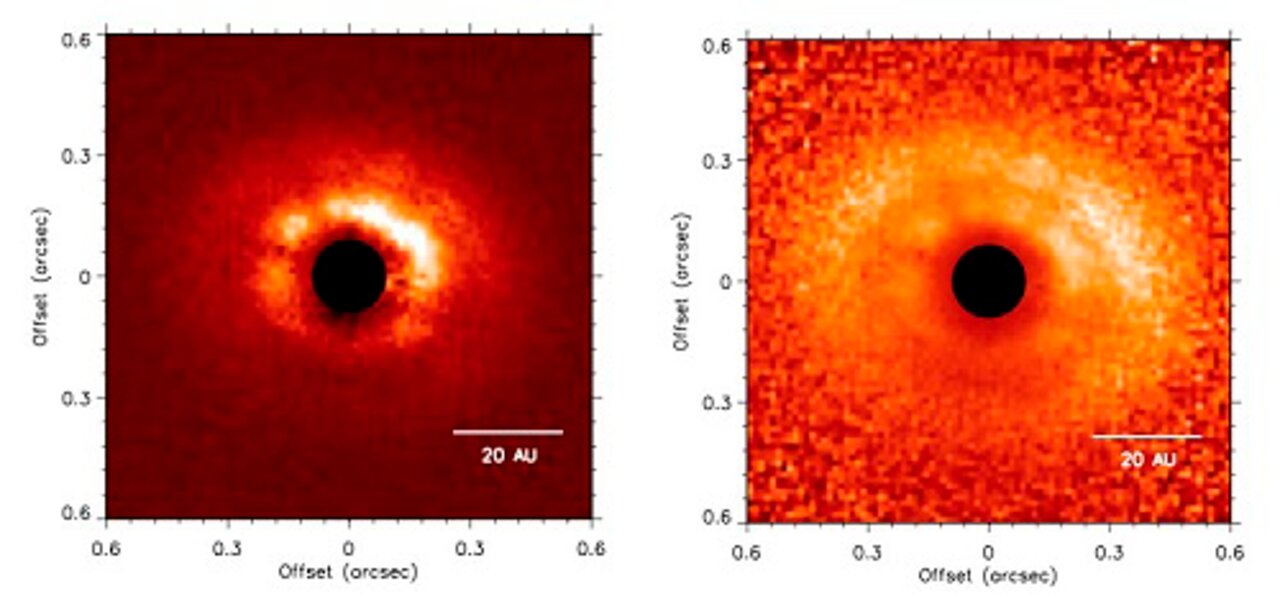Star Pair’s Dusty Disk Shines Light on Planet Formation
April 2, 2015

Astronomers using the Gemini South telescope in Chile have discovered striking new evidence for planet formation in a dusty disk surrounding a pair of stars in Sagittarius. The team took advantage of an offering for Early Science using the Gemini Planet Imager to study infrared light scattered off dust grains in the disk around the binary system V4046 Sgr. "The Gemini Planet Imager allows us to study nearby planet forming disks in sufficient detail that we can obtain direct-image evidence for young planets in orbits similar to those of the giant planets in our own solar system," says Valerie Rapson of the Rochester Institute of Technology, who led the research team. Indeed, the GPI imaging reveals an intriguing double ring structure around the V4046 Sgr binary that is most likely due to the formation of a giant planet (or planets) at some 4-12 times the Earth-Sun distance (approximately between Jupiter and Uranus, if orbiting our Sun)."This is perhaps the best such evidence yet for planet formation so close to a binary system," says Rapson. Analysis of the data also indicates that the dust grains orbiting the star are sorted by particle size, as predicted by recent planet formation models. The result is published in The Astrophysical Journal Letters and the preprint is at arXiv.org, see abstract below.
Abstract
We report the presence of scattered light from dust grains located in the giant planet formation region of the circumbinary disk orbiting the ∼20-Myr-old close (∼0.045 AU separation) binary system V4046 Sgr AB based on observations with the new Gemini Planet Imager (GPI) instrument. These GPI images probe to within ∼7 AU of the central binary with linear spatial resolution of ∼3 AU, and are thereby capable of revealing dust disk structure within a region corresponding to the giant planets in our solar system. The GPI imaging reveals a relatively narrow (FWHM ∼10 AU) ring of polarized near-infrared flux whose brightness peaks at ∼14 AU. This ∼14 AU radius ring is surrounded by a fainter outer halo of scattered light extending to ∼45 AU, which coincides with previously detected mm-wave thermal dust emission. The presence of small grains that efficiently scatter starlight well inside the mm-wavelength disk cavity supports current models of planet formation that suggest planet-disk interactions can generate pressure traps that impose strong radial variations in the particle size distribution throughout the disk.
